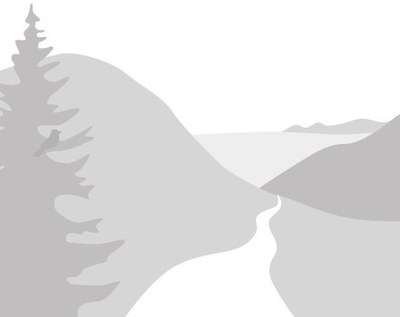
Trip Report
Day Hike - Glacier National Park
6-day Educational guided hiking trip in Glacier National Park
- Sun, Sep 10, 2023 — Fri, Sep 15, 2023
- Day Hike - Glacier National Park
- Glacier National Park
- Day Hiking & Naturalist
- Successful
-

- Road suitable for all vehicles
-
Trails were in the National Park, well-marked. Parking at trailheads were congested, early arrival is important. The Glacier Institute personnel transported us in vans to the trailheads and had designated parking spots. Road construction on the Going-to -the Sun Road caused traffic delays with traffic diversions and rough roads in some spots.
During the summer months, it is important to know that there is a timed reservation system to enter the Park if you are in your own vehicle. A National Park pass or equivalent is also needed for entry.
This was a fantastic trip, and I would highly recommend it for people wanting to hike in all the major areas in Glacier National Park and learn about the trees, plants, geology, glaciers, mammals and indigenous history.
This trip was set up with the Glacier Institute, who offer 3 of these 6-day educational guided tours per year. I called about 6 months' ahead and spoke with the program director and she agreed to reserve 12 spots on the September trip for our group. They have 25 total spots available to the public. This could also be offered as a private Mountaineers trip with dates of your choosing if reserved 12 or more months ahead. The fee for the trip was $1800 and included all meals from dinner on arrival day to lunch on departure day, lodging and transportation, and the guided hikes by outdoor education instructors. I had the participants pay directly to the Glacier Institute and say they were with the Mountaineers group. Within 2 months of the trip, I only had 10 signed up, so released the remaining two spots back to the Institute. Participants were responsible for their own transportation to/from Kalispel, MT (car, train or plane). The Glacier Institute picked people up from the airport or train station and drove them to their field camp (Southwest entrance near Apgar).
Lodging was in cabins (5 single beds) - pillows were provided but participants needed to bring their own sleeping bags. Bathrooms and shower rooms were in a separate building nearby. Meals were served outdoors at picnic tables and included options for those with dietary requirements, although there weren't always many choices. Coffee and tea were provided but if you wanted hot chocolate or dessert you needed to bring them yourself. There were two evening programs: one on the impact of fire on the park and the other on large mammals (lynx, wolverines). One night I read selections from Campfire Stories Vol 2 about Glacier N.P. Bear awareness education was provided and practiced daily. All guides carried bear spray. There were several sightings of "Bubba" (black bear) around camp, so people needed to use care when going to the bathroom at night or walking around alone.
Each day there were 2 hikes to choose from with varying distance/elevation gain but were in similar areas of the park (Two Medicine, Logan Pass, Many Glacier). Hikes were led by guides that had completed an intensive educational training program through the Glacier Institute. They did a great job of keeping the group together and going at a comfortable pace for the group with frequent stops for educational talks.
A typical day: Breakfast at 6am (coffee, tea, oatmeal, mini muffins, eggs/sausage, fruit, yogurt), eaten at picnic tables with headlamps. After breakfast, lunch fixings were put out (bread, lunch meat, lettuce, cheese, peanut butter/jelly, chips, condiments and various snacks like nuts, fruit snacks and granola bars). Time to wash up, get gear together and load up in the vans by 7am. Typically, there was a 1-2 hr drive to the trailhead. Hiking from 9-3pm then back to camp by 5pm. Time to shower and change clothes for dinner at 6pm (tacos, baked potatoes, spaghetti, curry). After dinner, there was either an educational program around the campfire, or time to play games. There was also a library room with books we could use. Then time for bed.
The scenery was beautiful, truly the Crown of the Continent, and it was fascinating learning about the geology, and the glaciers, seeing the red/green layers in the mountains formed by the argillite rocks, and standing at the Continental Divide. Educators were respectful of the Indigenous history of the area. The fall colors were stunning - huckleberry bushes (most of the berries were gone), Mountain Ash, aspen and maple trees, fireweed, and the multicolored rocks on the trail and in streams called "Cocoa-Pebble" rocks. The temperature was pleasant (60-70) with a slight bit of rain. Trees: Spruce, Hemlock, Endangered Whitebark Pine, aspens and maples. Wildlife sightings included black bear, grouse, Big Horn Sheep, Mountain Goats, California Ground Squirrel and chipmunks.
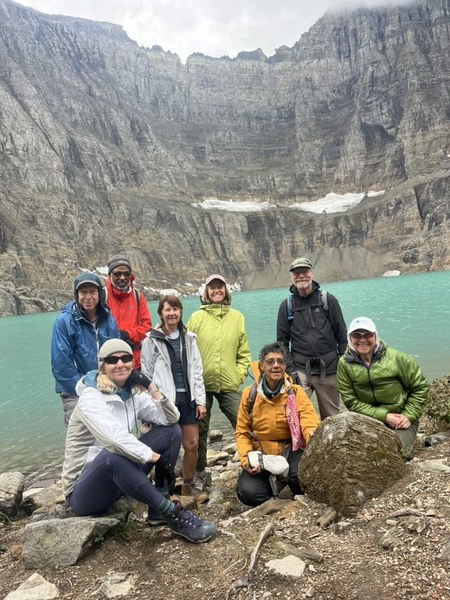
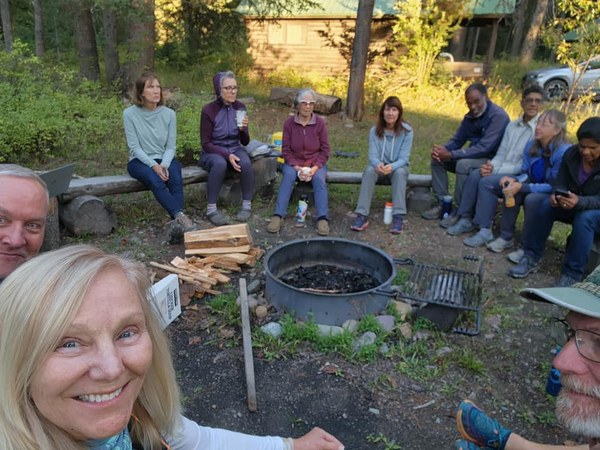
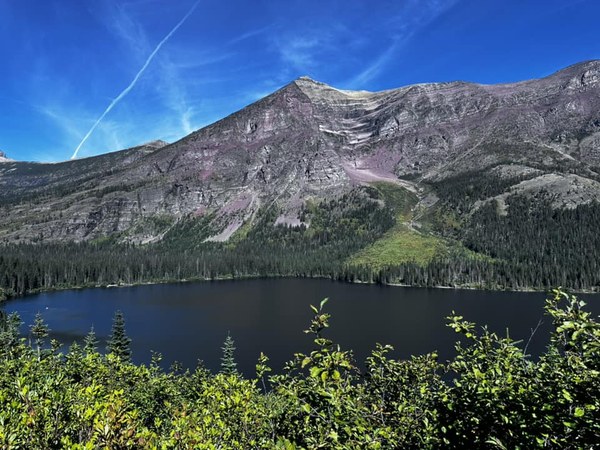
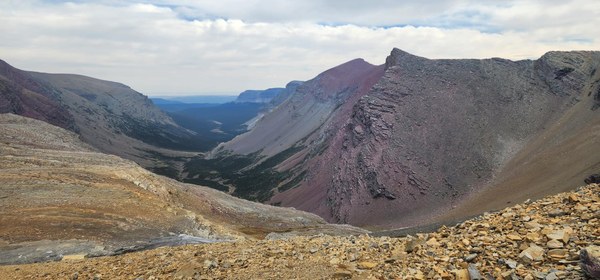
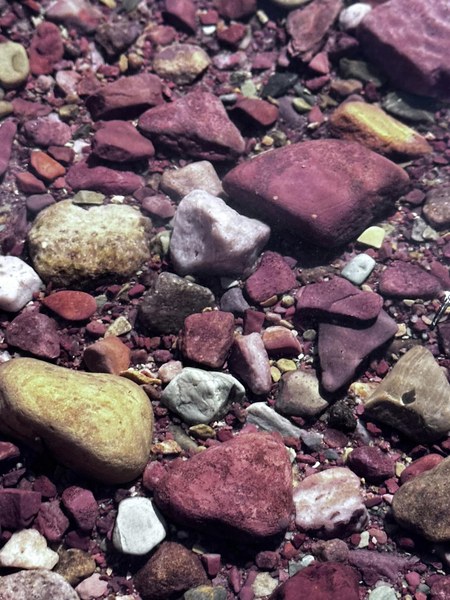
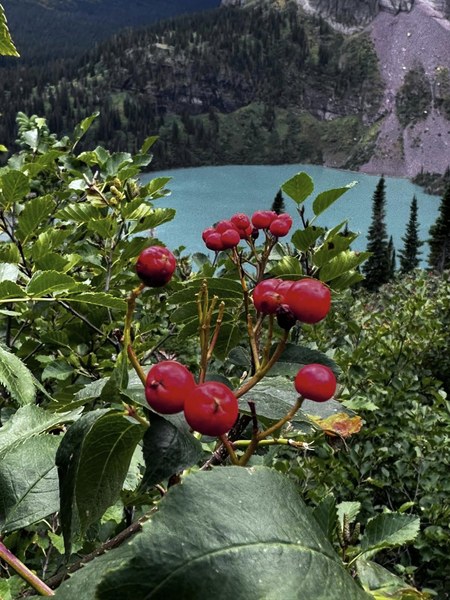
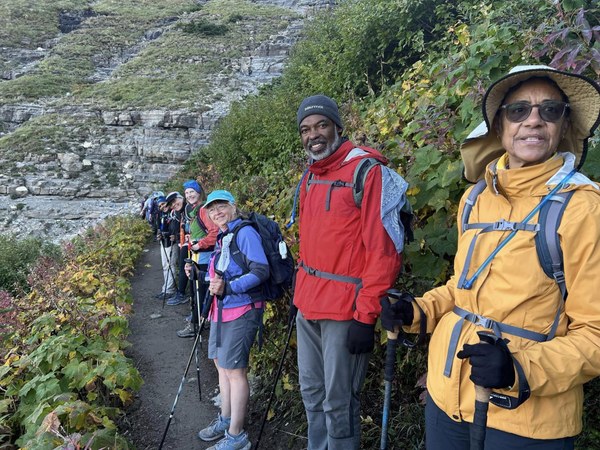
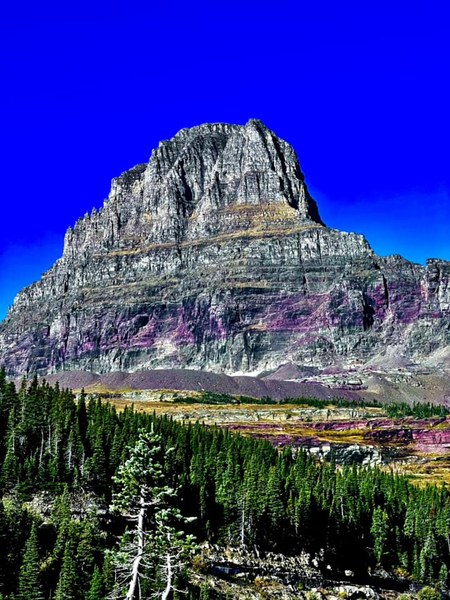
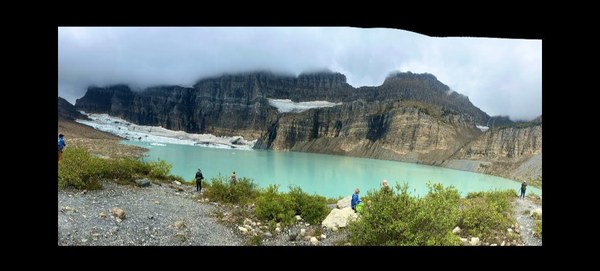
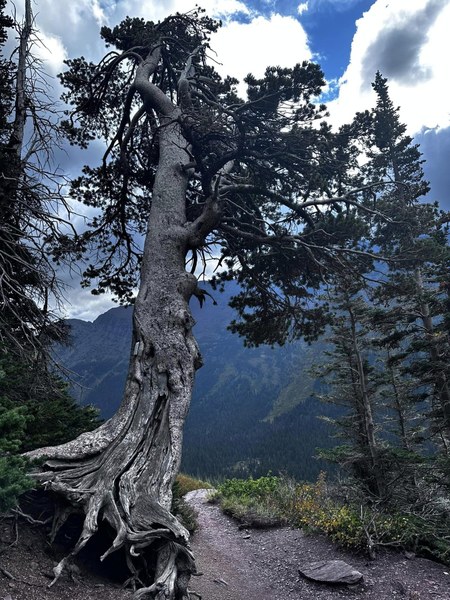
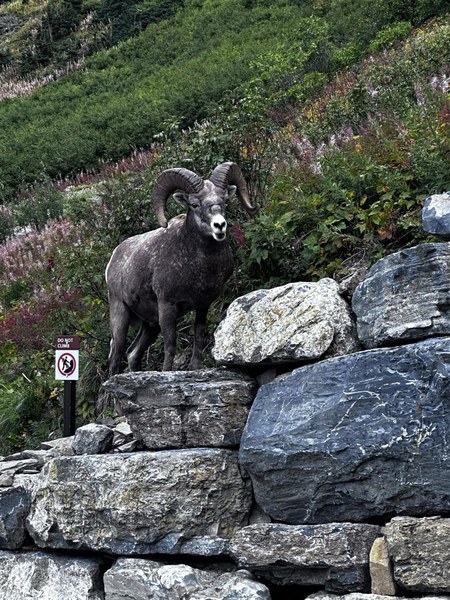
 Linda Shewey
Linda Shewey